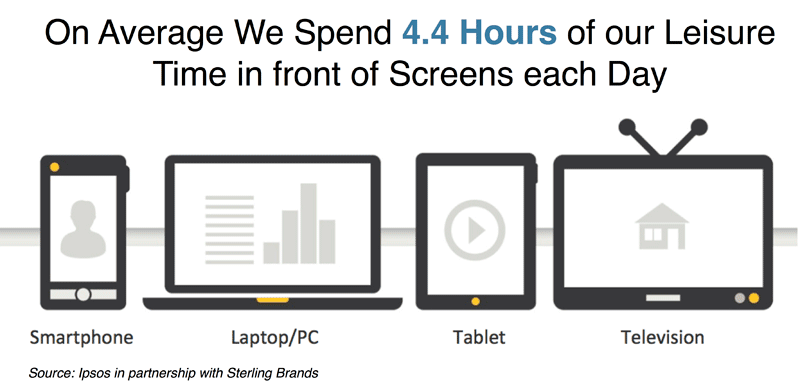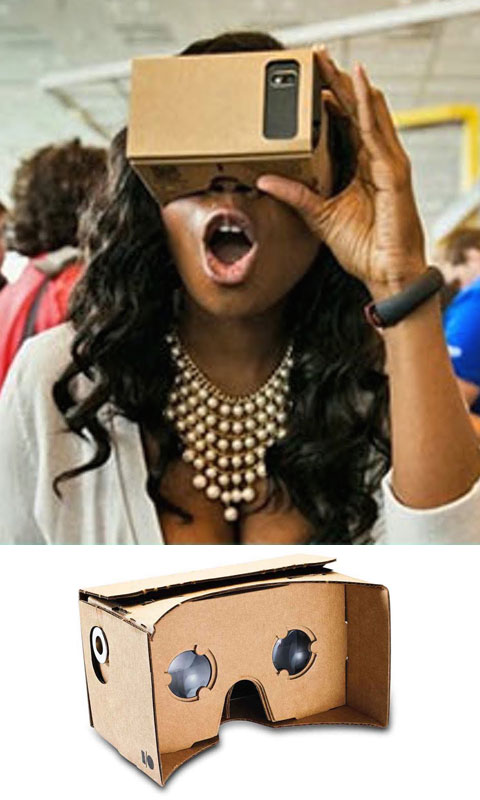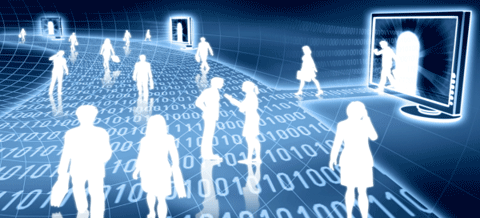
Vol. XV, No. 8, October 2015
The digitalization of leisure place
It wasn't all that many years ago back at the end of the 20th Century that we used to regularly leave home to visit places; whether it was to shop, bank, socialize with friends, attend college classes, or enjoy entertainment, sports and cultural events. Welcome to the 21st Century where the Internet and digital technology are now rapidly digitalizing all those real world experiences. We can now use the digital world and the fast growing on-demand economy to have just about any consumer goods delivered to our home or experience the equivalents of most real world entertainment experiences virtually in our homes. Home has become a place where everything we need or want is within reach. We have fewer and fewer reasons to leave our homes in order to conduct our business or enjoy our lives. We can just remain in the safe comfort of our homes without the hassle of getting dressed and driving somewhere. And that is exactly what people are increasingly doing, digital cocooning.
Just think about the disruption the Triple Revolution - the Internet, social media and mobile devices - have already caused to most location-based businesses. Heck some, such as bookstores and video rental stores, are almost totally extinct. I can't remember the last time I went to a store to buy anything other than at a grocery, drug or hardware store. With the click a button on the Internet I can have just about anything delivered to me in one or two days, even on a Sunday. In some cities, Amazon now delivers within two hours of ordering. In some cities I can have my groceries delivered. I can bank on the Internet. I can deposit checks with a photo of them on my smartphone. Want a new smartphone? Now I don't even have to leave home to get it. Sprint, with their Direct 2 You service, brought my new iPhone to me and set it up at my office (they would have done it at my home as well). Online education is fast disrupting the traditional university campus business model. Now there is no need to visit an urgent care clinic. We have a growing number of Uber-like apps that will bring a doctor to your door.
Digital social and entertainment options are slowly eating into our disposable leisure time. We are spending an increasing amount of our time every year on our digital screens. Today we spend an average of 83% of our 5.3 hours of average daily leisure time in front of a screen.

One very credible research study found that every hour of online leisure (not including playing online video games or watching online videos) crowds out, displaces, takes the place of 17.5 minutes of offline real world leisure.
Video streaming of movies on large screen HD TVs is increasingly disrupting the movie theater industry that has already seen a one-sixth (-16%) decline in participation since 2004. In fact, just about every type of out-of-home leisure is seeing a decline. Since 2004, participation in bowling is down by one-quarter (-25%), golf is down by 28%, the list is endless.
Faith Popcorn, the well known futurist, author, and CEO of the marketing consulting firm BrainReserve, in one of recent her blogs wrote about how the tech-enabled, on-demand economy is bringing anything we want, when we want it, into our homes. Faith's conclusion was that “consumer demand is moving fast to a luxe-when-I want-it-and-I-want-it without-leaving-home model.” She goes on to say, “With all these conveniences at our fingertips [via our digital screens], nobody will be leaving home. Not unless we really, really want to... It'll take something truly enchanting to bring us out of our cocoons: the name-droppable vacations, the must-live-it events, the one-of-a-kind experiences.
“That will be the question for us, and for companies: When we don't have to leave home, what will get us out the door?”
Faith's trend predictions have always been dead on. We believe Faith is 100% on target with her observation.
Continued advances in digital technology and connectivity are sure to grow this stay-at-home mindset in the future. Internet connection speeds are becoming super fast. Computing power and the quality of our digital devices are rapidly improving. And there is an even bigger disruption that is lurking just around the corner - virtual and augmented reality. VR and AR will bring us the ultimate digitalization of place, meaning we will be able to fully experience places and experiences that exist not only in some imaginary world, but also in the real outside world while sitting in our cushy lounge chair at home. And we won't be viewing them on a two-dimensional screen. Rather, we will virtually be in an all-enveloping, multi-dimensional and multi-sensory alternate reality that has a real sense of presence. Place and people will be virtually transported to be experienced in our homes. This will be a transformative sea change to our lifestyles and society and the ultimate disruption of place.
There will be no need to attend the sporting event. Just pick your seat and the entire virtual experience will be streamed into your home to experience. Social media will take on a whole new meaning when you can meet with your friends with lifelike avatars at the location of your choosing or with AR have their holographic virtual presence in your home. Want to play laser tag with friends? That can take place in a virtual space while you all are at different locations. Want to visit the streets of Istanbul? You'll be able to be teleported to virtually walk them without the need to jet there or have the risk of terrorism. The possibilities for upending life as we now know it in real reality are endless.

Google Cardboard
We are fast evolving from a world of real reality to virtual-augmented reality. Now the question, the challenge for the location-based leisure industry, which includes family entertainment centers, theme parks, museums, sports venues and any out-of-home location where people currently go for some sort of entertainment, leisure, cultural or sports experience, is how to enhance the quality of the out-of-home experience to counter the growing seductive siren call of the at-home virtual digital world. Or as Faith Popcorn put it, “When we don't have to leave home, what will get us out the door?” What will be truly enchanting enough to bring us out of our cocoons?

Whether you realize it or not, the digital virtual world is already starting to disrupt the business model and eat into the market share of just about every type of out-of-home leisure experience including entertainment, culture and sports. More and more of our limited leisure time is being spent in the at-home and mobile virtual world.
Now is the time for all types of location-based leisure venues, including family entertainment centers, to evolve, to change their business model and raise their fidelity to become an enchanting out-of-home experience to avoid becoming a victim of Digital Darwinism.


